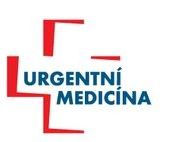INTRODUCTION
- Contents
- Editorial – Jana Šeblová
EMERGENCY DEPARTMENTS
- Selected emergency conditions in connective tissue diseases and systemic vasculitis – Johana Šidáková, Tomáš Veleta, Tomáš Soukup
PHYSIOLOGY AND EMERGENCY MEDICINE
- The role of chest tube in the prehospital care in trauma – Jana Berková
MEDICAL DEVICES
- Defibrillation from the point of view of electrophysiology – David Astapenko, David Řehák, Vladimír Černý
EDUCATION
- Statement of the Expert Discussion Panel of the 1st Conference on Point-of-Care Ultrasonography – Roman Škulec, Martin Balík, Vladimír Černý, David Doležal, David Halata, Zdeněk Monhart, Martin Štěpán
- Extracorporeal resuscitation of a patient in cardiac arrest and severe accidental hypothermia – Robert Nagypál, Marek Smoleňák, Vladimír Fedorák, Jozef Valky
- How to pass the specialisation exam in emergency medicine? – Katarína Veselá, Jana Šeblová, Jana Kubalová
ETHICS, PSYCHOLOGY, LAW
- Death of a patient from acute coronary syndrome after refusal of the provision of health services – Robin Šín
INFORMATION
- Annual report from Non-physician section of the Society for Emergency and Disaster Medicine Czech Medical Assocoation JEP 2021–2022 – David Peřan, Jiří Kodet
- From the review of the book Šeblová, Matějek et al.: Ethics in Emergency Medicine in daily practice, Grada 2023 – František Duška
ABSTRACTS
SELECTED EMERGENCY CONDITIONS IN CONNECTIVE TISSUE DISEASES AND SYSTEMIC VASCULITIS
Johana Šidáková, Tomáš Veleta, Tomáš Soukup
Abstract
A physician treating a potential rheumatology patient often works with a limited amount of information. They must assess the risks and correctly refer the patient for further care to the regional healthcare facility or tertiary center. In this article, we therefore focus on the typical clinical picture of selected emergency conditions in connective tissue diseases and systemic vasculitis with the aim of adopting an approach to the patient corresponding to this urgent situation.
In most cases, it is an inflammatory condition associated with the involvement of the locomotor system (especially arthritis), but also other organs and systems (heart, lungs, kidneys, nervous system and others), and/or fever. Most of them are reliably diagnosed by a combination of common laboratory, imaging and immunological examinations, where the typical finding of autoantibodies is mostly from the ANA or ANCA family.
For individual systemic diseases, specific emergency situations are discussed, such as neurolupus, conditions associated with thrombotic microangiopathy (scleroderma renal crisis, catastrophic antiphospholipid syndrome), swallowing disorder with risk of aspiration, anterior ischemic optic neuropathy, and diffuse alveolar hemorrhage syndrome. Their urgency lies, among other things, in the fact that this may be the very first manifestation of a systemic disease that has not been diagnosed yet. They have a high mortality rate and a poor prognosis if not diagnosed and treated quickly enough. High-dose pulses of intravenous glucocorticoids remain the gold standard for treatment.
It is always difficult, complex and responsible to be among the first on the way to knowing a serious emergency diagnosis. It is easier to walk prepared.
Key words: connective tissue diseases, systemic vasculitis, thrombotic microangiopathy, diffuse alveolar hemorrhage, scleroderma renal crisis
DEFIBRILLATION FROM THE POINT OF VIEW OF ELECTROPHYSIOLOGY
David Astapenko, David Řehák, Vladimír Černý
Abstract
Defibrillation is an integral part of the treatment of malignant arrhythmias, and it is embedded in the international guidelines on cardiopulmonary resuscitation. Since its first clinical use in the 1940s, it has undergone considerable progress, miniaturization, and research-based knowledge of myocardial electrophysiology. The development of knowledge of myocardial electrophysiology was based on a number of theories and models, but even nowadays the effect of electrical shock on the myocardium is not fully explained. The first defibrillators produced a monophasic shock, but later biphasic shocks proved to be more effective and safer in terms of reducing the shock energy.
Key words: defibrillation – myocardial electrophysiology – malignant arrhythmia
EXTRACORPOREAL RESUSCITATION OF A PATIENT IN CARDIAC ARREST AND SEVERE ACCIDENTAL HYPOTHERMIA
Robert Nagypál, Marek Smoleňák, Vladimír Fedorák, Jozef Valky
Abstract
Severe accidental hypothermia refers to a drop in the core body temperature of the human body below 28 °C. It is characterized by impaired consciousness and malignant rhythm disorders often leading to circulatory arrest. However, due to the low applicability of the classification of accidental hypothermia according to core body temperature in pre-hospital health care, today the revised Swiss classification of hypothermia is the AVPU scale, which prioritizes the patient‘s clinical condition. Severe hypothermia falls into the state of „painful“ with preserved signs of life and or „unresponsive“ with cessation of circulation. Extracorporeal circulation is today the gold standard in the treatment of patients with severe hypothermia and possible circulatory arrest. The article presents the case of a patient with severe hypothermia (initial body temperature 22 °C in the core) and circulatory arrest in a malignant rhythm of ventricular fibrillation. By standard ALS protocol (Advance Life Support) until the connection to extracorporeal circulation with heating. By subsequent restoration of heart activity after reaching the patient‘s core body temperature responding to the delivered defibrillation shock and cardiopulmonary recovery of the patient without neurological deficit. The published article aim is to familiarize the professional society with the protocolized, integrated concept of extracorporeal heating of the patient using the ECMO methodology and to point out the opportunities and challenges of ECPR implementation in Slovakia.
Key words: hypothermia – ECPR – ECMO – ectracorporeal active rewarming – protocol
DEATH OF A PATIENT FROM ACUTE CORONARY SYNDROME AFTER REFUSAL OF THE PROVISION OF HEALTH SERVICES
Robin Šín
Abstract
This case report presents the case of a 73-year-old man who freely decided, in accordance with the Health Services Act, to refuse the provision of health services by an Emergency medical service despite repeated warnings from EMS physician on scene that his actions could endanger his health and life. The patient died approximately two hours after the first contact with the Emergency medical service at the place of his residence. An autopsy revealed acute myocardial infarction as the immediate cause of death.
Key words: refusal of medical services – prehospital emergency care – acute coronary syndrome
